In the United States, there is a growing trend for delaying childbirth. This development has led to an increased number of older women experiencing infertility as they attempt conception. It is well-known that age affects a women’s ability to conceive. Women over the age of 40 have been shown to have worse outcomes with assisted reproductive techniques (ART) than younger women, in terms of both response to ovarian stimulation and pregnancy rates.
With chronologic aging, ovarian aging also occurs, defined as a decrease in ovarian number and quality. Numerous studies have shown that older women have a worse response to ovarian hyperstimulation as a function of their ovarian depletion and deteriorating oocyte quality. In addition, increasing age is associated with increased rates of aneuploidy (inexact multiples in number of chromosomes), leading to higher miscarriage rates even when pregnancy is achieved.
Because of the large financial and emotional cost associated with assisted reproduction, it is important to be able to predict who may succeed in the IVF process. In general, the best possibility of success for all patients is with the first cycle of IVF. However, success rates for patients are also dependent on the success rates of individual clinics. Here at HRC Fertility, we pride ourselves in consistently having excellent IVF success rates in women 40 years and older.
Age and FSH (follicle stimulating hormone) levels together can be predictive of IVF success. Age alone has been used to predict success with IVF. It has been shown that women 40 years or older—when compared to women less than 40 years of age—had fewer blastocysts develop, lower implantation rates with day 5 blastocysts, and lower pregnancy rates.
In general, FSH levels increase with age. In IVF, FSH levels correlate with duration of stimulation, number of stimulation medication given, and number of oocytes retrieved. FSH may have a stronger correlation with oocyte number than age. Although both age and FSH can be good prognostic indicators of IVF success, neither is dispositive.
AMH stands for Anti-Mullerian Hormone, which is made by the oocyte follicle. Levels of AMH found in the blood are also an indicator of a woman’s ovarian function. In addition to blood tests, a pelvic ultrasound can be used to count the number of antral follicles (which also correlates with ovarian reserve). Some investigators have purported using response to ovarian hyperstimulation as a better way to predict IVF success. In women over the age of 40 with normal FSH levels, the number of embryos available to transfer can be used to predict pregnancy rates.
All markers of ovarian reserve (age, blood tests, ultrasound) are best suited to be used as counseling tools. Even with an advanced age, an elevated FSH, and a low antral follicle count, there is still a chance of pregnancy.
At HRC Fertility, we believe that giving a woman the chance to get pregnant is more important than our success rates on paper. Many IVF clinics have strict cut-offs in terms of age or ovarian function testing (FSH and antral follicle count), and won’t let women undergo an IVF cycle if these criteria aren’t met. This works well for the clinics in that it keeps their published success rates artificially high. However, many women who could get pregnant will never get the opportunity to try. In fact, many of these women may be pushed to try donor egg even though there is still a small but reasonable chance for pregnancy with their own eggs.
Here at HRC Fertility, we believe that if there is still a chance for pregnancy—and if the patient is well educated in the risks (medical, emotional, and financial)—then IVF can and should be attempted.
Nevertheless, we still believe that identification of predictors for successful IVF is particularly important in patients 40 years and older, since IVF efficiency is lower in this population. By more accurately identifying which patients will have success with IVF, we can avoid the financial and emotional costs of multiple unsuccessful attempts. (667)

